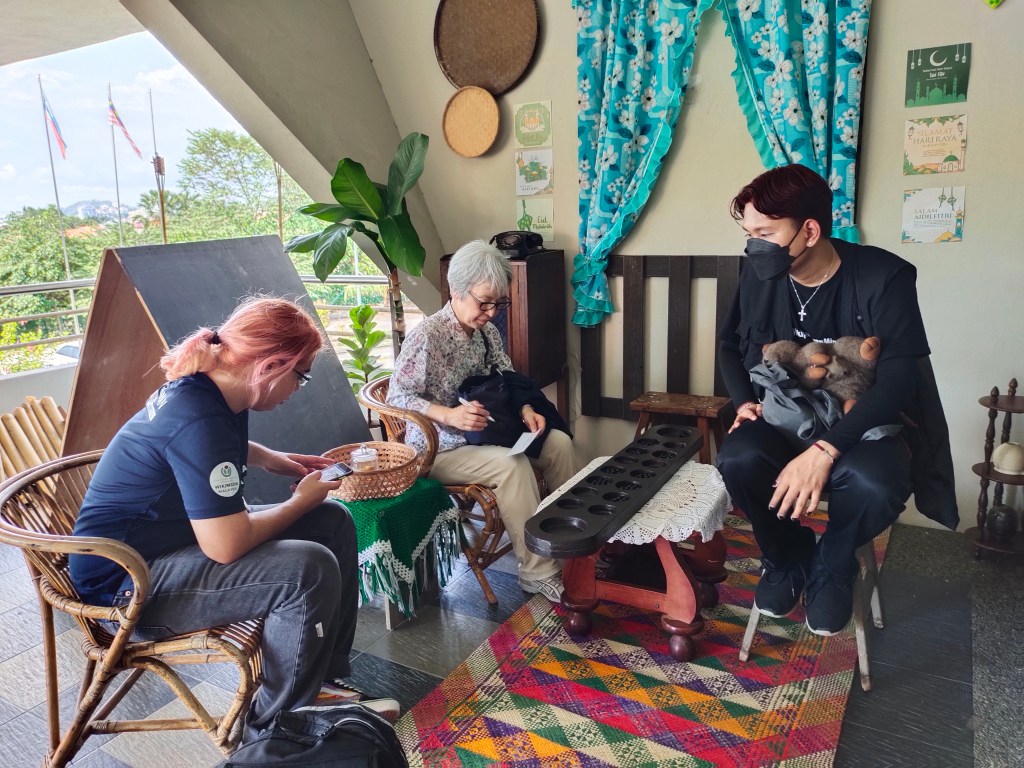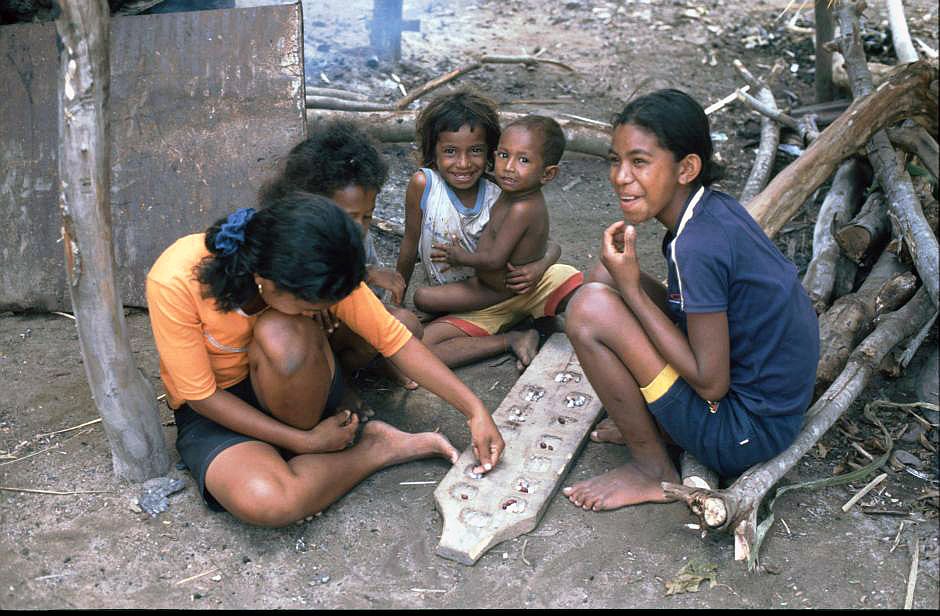I am a member of a local reading group and read books to children in my community. Recently, I learned about a picture book by a Nigerian author titled “おとうとは青がすき (Chidi only likes blue)”. In the book, there is a scene where an African father teaches his children a game called Okwe (ókwè). It says that there are 14 hollows on a wooden board, and the children play by moving seeds that are placed in the hollows. It also said that children can learn numbers by playing this game. However, I had never seen this game in Japan, so I could not understand what kind of game it was.
When I was in Malaysia in May for ESEAP 2024, participants visited the Sabah Art Gallery. It was just at the time of the Malaysia-China friendship commemorative exhibition, so we were able to view art works from both countries. Outside the gallery there were chairs and table, and a long wooden object with a strange shape. I thought, “Oh, it’s that game I saw in a picture book!” So I asked Malaysian and Indonesian Wikimedians who were accompanying us to show me how to play.

The name of the game is “Congka,” which in Chinese is written “馬來播棋 (Ma Lai Ban Qi). To play, two people sit facing each other and place a board between them. The same number of balls (about 10) are placed in every hole on the board. The order is decided by rock-paper-scissors, and the winner takes all the balls in one of the hole at the end of the board and puts them in the next hole one by one. The winner takes all the balls in the end. I did not understand the details of the game, but I understood that this kind of game is common in this region. Malaysian and Indonesian Wikimedians said that they used to play this game when they were little.
After returning to Japan, I found out that it is a kind of game called “Mancala,” which is widely introduced in Southeast Asia. Around Malaysia, it is called “Congka,” and in the Philippines, it is said to be called “Sungka”. In Africa, it is known as “Oware,” and I also learned that “Okwe” (ókwè) is the official Ibo language of Nigeria, and I have learned many things by going back and forth between Wikipedia and Wikidata. It was quite an enjoyable experience to learn that the balls are made of pebbles, beans, seeds, or beads, depending on the region.

Can you help us translate this article?
In order for this article to reach as many people as possible we would like your help. Can you translate this article to get the message out?
Start translation

